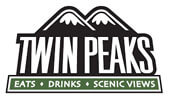Cracking the Business Casual Dress Code
The American workplace is much different than it was 10 or so years ago: Everything from corporate structure and hiring practices to work schedules and compensation has been affected. But these important areas are not the only marked differences in today’s changing workplace.
The appearance of the American worker has changed as well. Not long ago, everyone from the most seasoned professionals to entry-level employees had a common understanding of appropriate business attire. Thanks to the creation of the “khaki culture” and increasing popularity of business casual dress, it’s no longer that simple.
So how do you dress down for work without looking like you’re headed to the beach? Here are a few easy rules to live — and dress — by:
Consider Your Work Environment
If you’re meeting with clients or having business lunches, err on the conservative side. It’s a sign of professional respect, and you can save the khakis for a time when you’ll be in the office all day.
Strive for Consistency
If you wear tailored and conservative outfits Monday through Thursday, Friday isn’t the day to show up like you just rolled out of bed. No matter what industry you’re in, consistency goes a long way in establishing trust and credibility with all your internal and external contacts.
Ask First, Dress Later
Show respect for both yourself and management by avoiding things like jeans, sneakers, hats and T-shirts. Some companies do take a more lenient approach to casual dressing, so be sure to check with your HR department or manager before showing up dressed for a barbecue.
Look Inside Your Closet
Finally, you shouldn’t have to run out and buy an entire new wardrobe just for business casual days. Chances are you already own many of the items you need.
Applying Business Casual
So now that you’ve figured out the rules and banished your suits to the back of the closet, here are a few ideas to bring you into the business casual corporate culture.
For Women
- If your company’s idea of casual isn’t quite jeans and sweaters, pantsuits are the answer. Not only are they trendy, but they can be dressed up or down. Choose a dark neutral shade like black, navy, brown or gray and opt for pants with a bootleg cut. Pair them with a light sweater, and you’ll be ready to go from your desk to a client meeting without a second thought.
- The most current dress style to own for work is a classic sheath, which is fitted to flatter the body’s natural curves without being too tight or revealing. Pair it up with a cardigan or a blazer in the same fabric and color.
- Stock up on different tops to give your wardrobe a bit of versatility. Crisp, cotton shirts in white and hues like chambray and chartreuse instantly add a casual element to your dress pants or khakis. Cardigan twin sets are also an easy way to present a softer look while still looking professional.
- Jewelry, scarves and other accessories will add a polished touch to any outfit. Remember: Less is more.
For Men
- A sport coat instantly creates a pulled together look, especially in a business casual environment. It’s also an ideal choice for client meetings or presentations. Pair up a black, navy blue or dark gray blazer with khakis or dark wool pants.
- In addition to traditional dress slacks, khakis, Dockers, corduroys, wool flannel and linen slacks are also appropriate for the office, either with or without a blazer. Just because it’s casual day, it doesn’t mean you can turn up in wrinkled pants. Be sure to iron them beforehand.
- Casual button-down oxford shirts are a great alternative to dress shirts, with or without a tie. Skip the loud prints like plaid, and opt for basic white, chambray or pinstripe.
- Shoes are an afterthought for many men, but unkempt footwear can ruin an otherwise polished look. Oxfords and loafers in brown or black are a good match for khakis or corduroys, but save the sneakers and hiking boots for the weekend.








